Mastering Ajvar Macedonian Roasted Pepper Spread
37 min read Discover the origins, techniques, and flavors of Macedonian ajvar with step-by-step roasting tips, ingredient selection, and serving ideas to elevate this beloved Balkan pepper-and-eggplant spread at home. October 07, 2025 09:08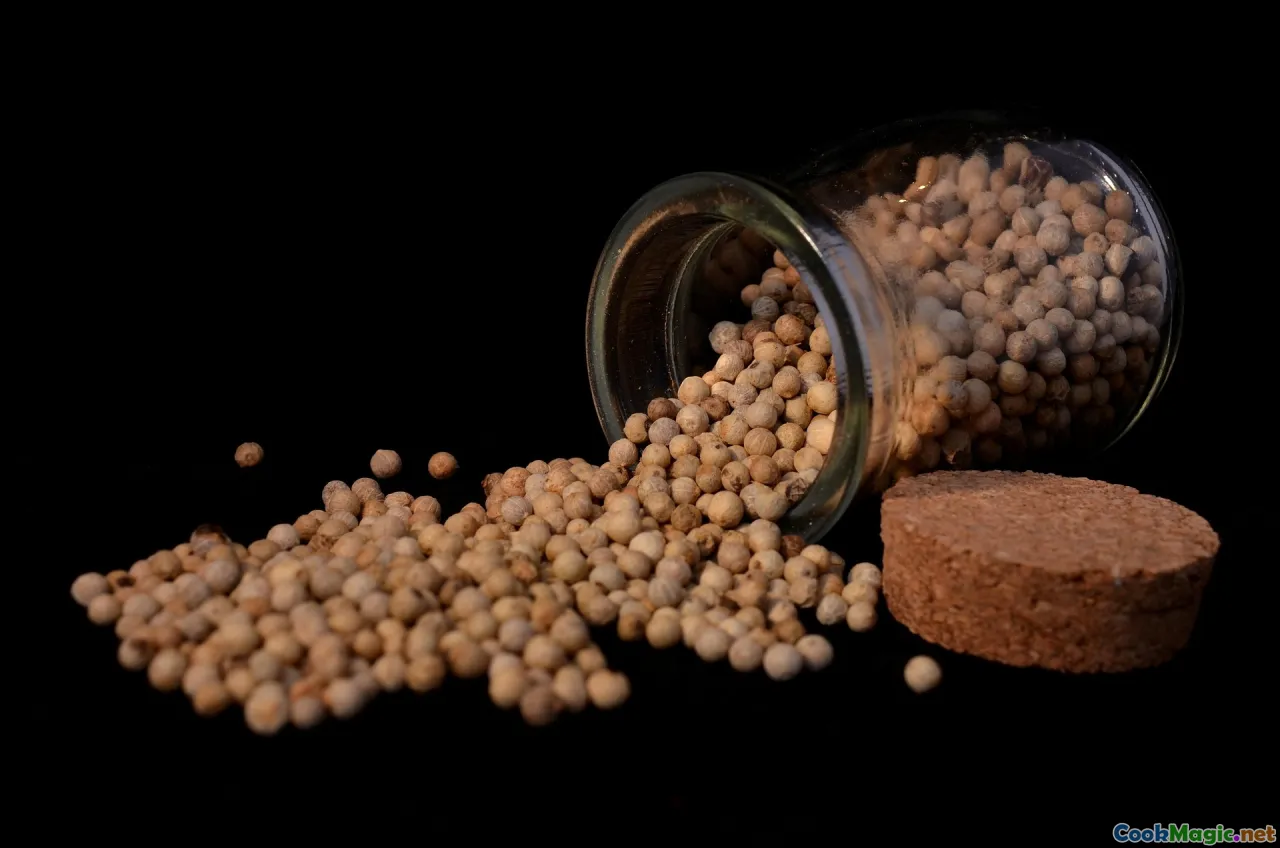
The first hint of ajvar season in North Macedonia isn’t a date on the calendar—it’s the air. By mid-September, neighborhoods from Bitola to Kumanovo carry the scent of blistering red peppers, smoky and sweet, rolling over courtyards and balconies like a promise. Women and men in aprons stand sentry by iron grills or drum roasters, flipping peppers until their skins blacken and buckle. Children trot past with bowls of salt and oil. The sounds are a quiet symphony: a pepper hissing when it hits the grate, a knife scraping charred skins, the metronome clink of jars lining up on tabletops. This is how ajvar—ајвар—arrives: not just a roasted pepper spread, but a season and a shared ritual.
The Smoke That Marks a Season
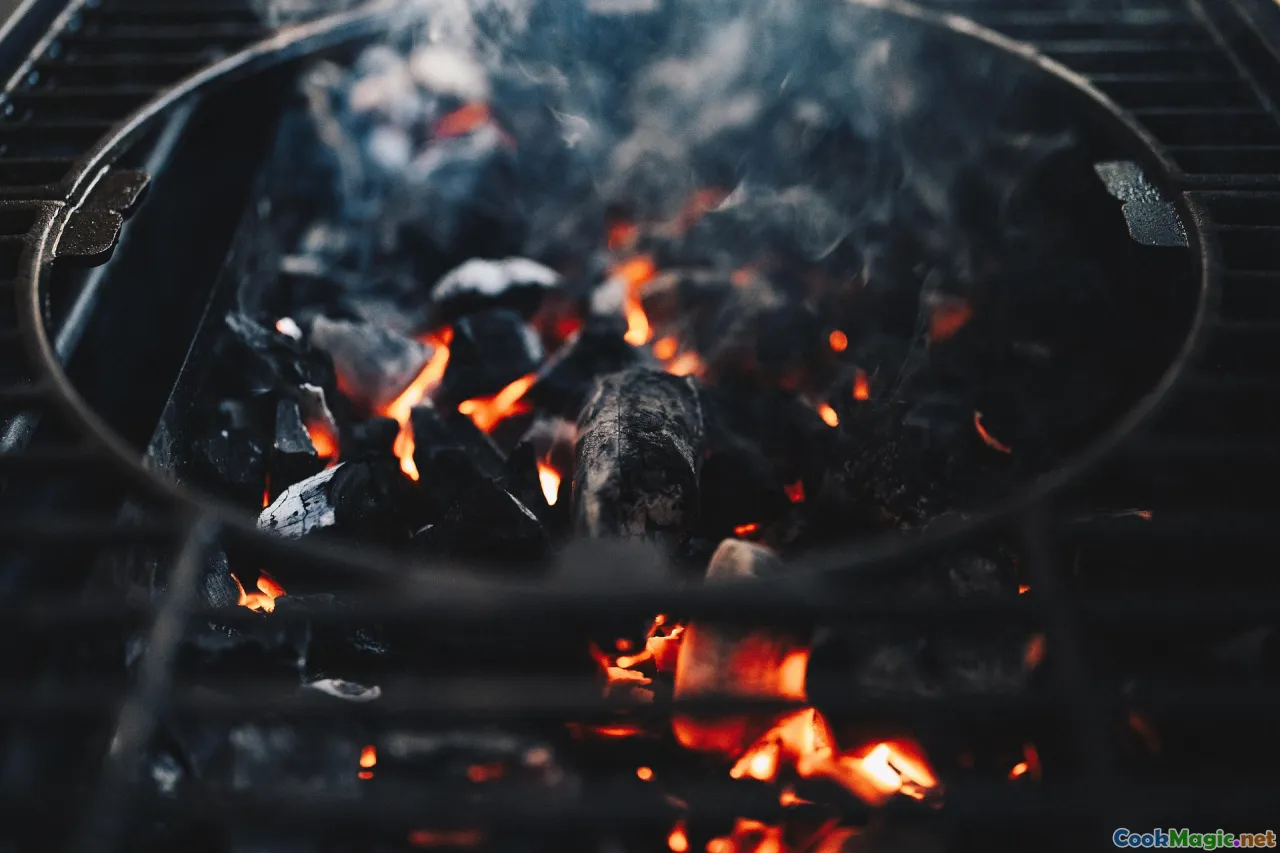
In Skopje, the Green Market (Zelen Pazar) begins to tilt toward crimson in early autumn. Pyramids of thick-fleshed peppers—horn-shaped “roga” and gate-shaped “kapija”—stand shoulder to shoulder with eggplants and sacks of onion skins for dyeing the Easter eggs you’ll eat long after the jars are sealed. On a Saturday morning, you’ll find families weighing peppers by the crate, arguing (tenderly) over whether to include eggplant this year or hold fast to the all-pepper version. Someone will mention that the peppers from the Pelagonija valley are sweetest this year, their skins taut like lacquered cherry. Another will swear by the heat-kissed fruit of the Tikveš region, where the sun lingers.
Ajvar, for Macedonian families, isn’t a side dish; it’s October, put away in glass. It’s a winter’s worth of breakfasts and late suppers, the comfort on a slice of bread when the snow falls in Šar Planina. It’s eaten at the kitchen table along with white brined cheese (sirenje), the last tomatoes from the garden, and steamed hot bread that fogs the window. It’s also fiercely personal. Recipes are inherited and improvised, defended and tweaked. When I think of my first true ajvar, I remember a balcony in Ohrid, the lake flashing silver beyond a line of laundry, and a grandmother stirring a heavy pot with the patience of a clock.
What Makes Macedonian Ajvar Distinct

Ajvar is made across the Balkans, and each region wears it differently. Macedonian ajvar is typically:
- Pepper-forward and mellow-sweet, with heat as an accent rather than a headline.
- Glossy rather than greasy, bound with sunflower oil drizzled slowly until the paste shines but doesn’t slick.
- Sometimes enriched with a small percentage of roasted eggplant for body and a subtle shadow of smoke.
- Seasoned simply—salt, sometimes a thread of garlic, a whisper of vinegar for brightness and preservation.
You’ll find cousins nearby: Serbian-style ajvar can lean thicker and occasionally hotter, Croatian coastal versions sometimes slip in olive oil, and Bulgaria’s lutenica is tangier, with tomatoes and spices nudging the profile toward a relish. Macedonian ajvar stands its ground: roasted red peppers as the sun of the plate.
A note on terminology:
- Ajvar: Primarily roasted red peppers, sometimes with a bit of eggplant; smooth to slightly coarse.
- Pindjur: Chunkier, often includes tomatoes and roasted eggplant; garlickier, a stovetop stew of late summer.
- Lutenica: Tomato-forward, often with peppers and carrot, seasoned and brighter.
- Malidžano: A Macedonian specialty from the Bitola region, pale green and silky, made with green peppers, eggplant, and sometimes walnuts.
Choosing Your Peppers and Other Ingredients
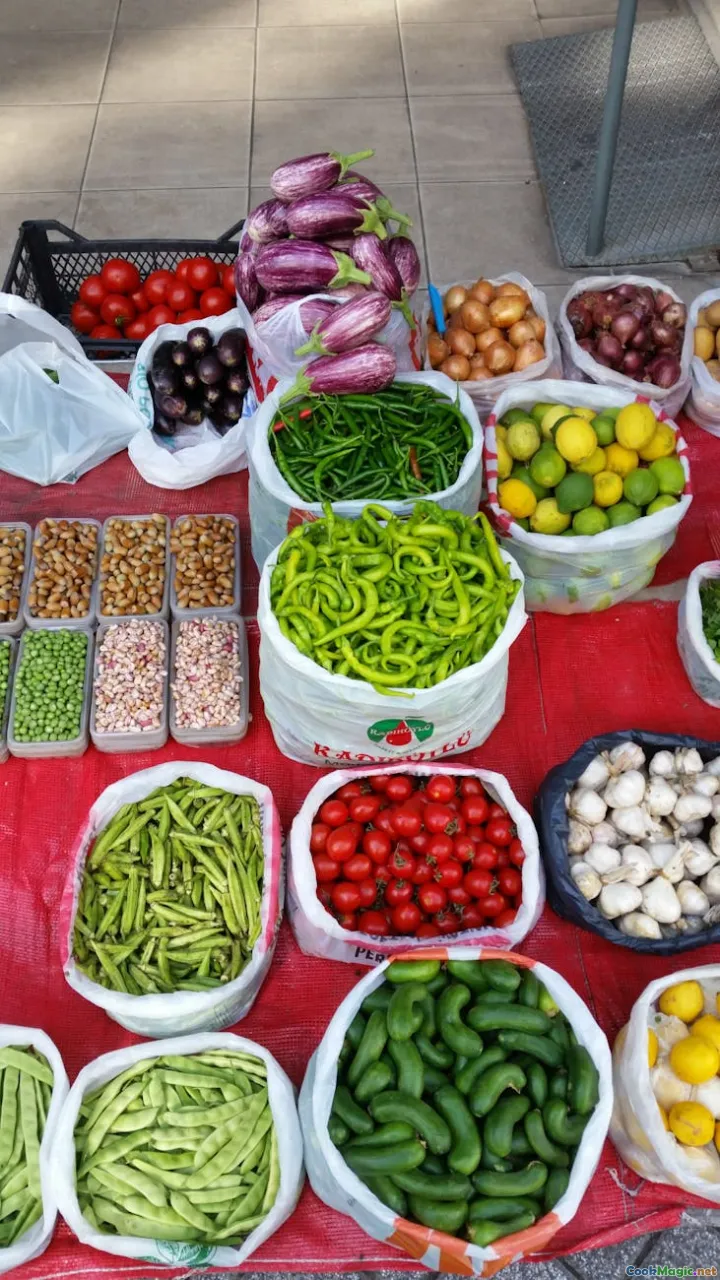
Ingredients dictate outcome. For ajvar, your pepper is your signature.
Peppers:
- Look for thick-fleshed, red, sweet peppers with low seed cavities. In Macedonian markets you’ll see “roga” (horn-shaped) and “kapija” (broad, gate-shaped). The thicker the walls, the more cream-like the final texture.
- Avoid bell peppers if you can help it. They’ll work, but their water content and shape make for more labor and less intensity.
- Peak-season peppers are non-negotiable. They should be sweet enough to smell like fruit when you snap the stem.
Eggplant (optional but excellent):
- Traditionalists argue both sides. A 10–20% eggplant addition (by weight) deepens the spread’s silkiness and adds a bass note of smoke. Use firm, heavy eggplants with glossy skins, roasted whole until collapsing.
Fat:
- Sunflower oil is the Macedonian staple. It’s neutral, with a clean finish and a familiar mouthfeel. Olive oil can dominate the delicate pepper sweetness and is less traditional inland.
Acid and seasoning:
- Salt: Bring the pepper’s sugars forward and correct the bitter edge char can leave.
- Vinegar: A teaspoon per jar is enough—think balance and preservation, not pickling.
- Garlic: One clove per kilo of peppers is plenty if you include it at all.
- Sugar: Controversial. If your peppers are dead-ripe, you won’t need it. If you must, a teaspoon for a five-kilo batch can round out the profile without turning it jammy.
Spice:
- For a mild warmth, add a few roasted hot peppers (like feferoni) to the batch. Macedonian ajvar is rarely fiery; heat should hum, not shout.
Tools and Setup: The Ajvar Station
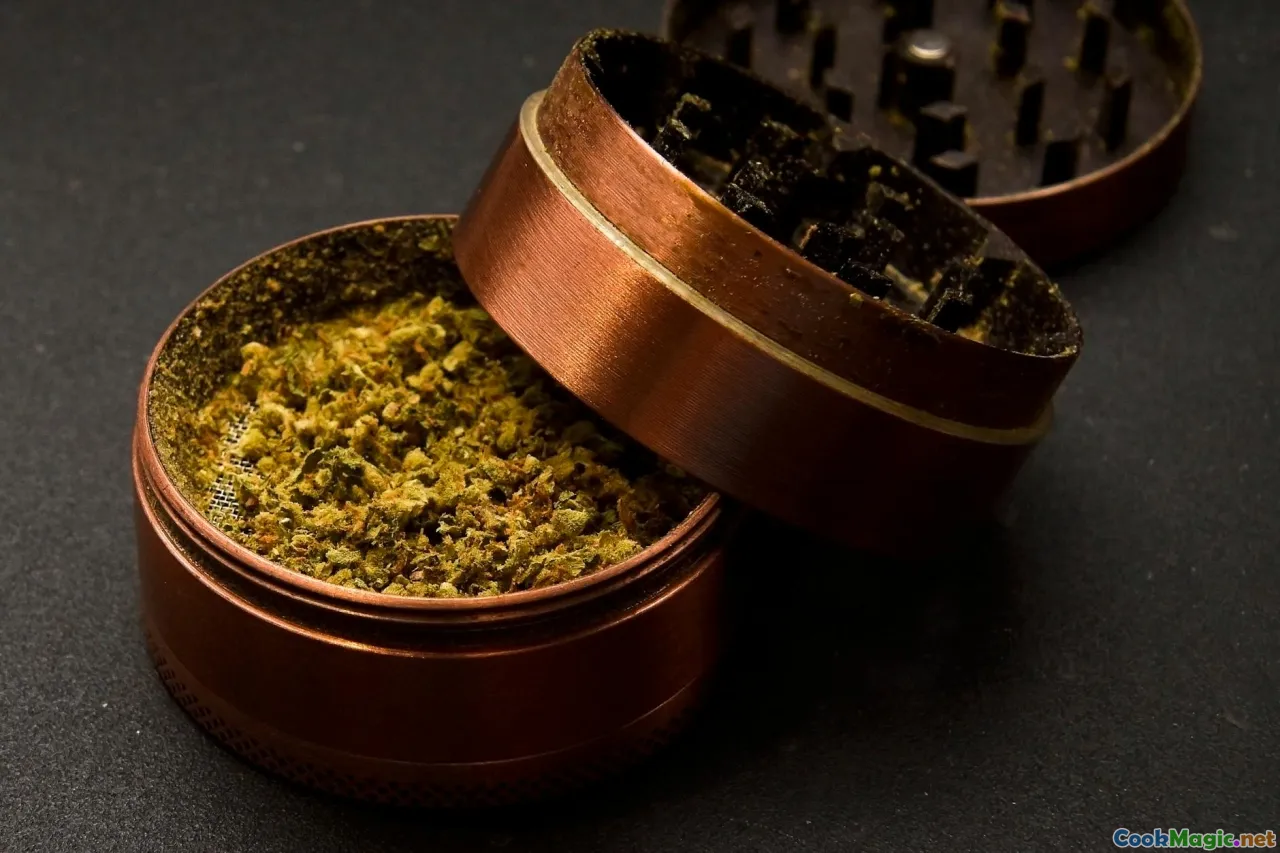
You can make ajvar with modern appliances, but the process sings when the tools respect the ingredient.
- Heat: A charcoal grill, wood-fired roaster, gas stovetop flame, or even a broiler. Charcoal/wood gives the most profound flavor.
- Roasting surface: Metal grate, perforated pan, or a specialized rotating drum roaster (beloved at Macedonian markets).
- Bowl and cover: To sweat the peppers after roasting so skins slip off. A lidded pot or a large bowl and a clean cloth do nicely.
- Gloves: Latex or cotton under nitrile; pepper skins and heat cling.
- Grinder: A manual or electric meat grinder with a medium plate produces the best texture—uniform, slightly coarse, never pasty. A food processor can work in pulses, but be cautious: overprocessing creates a baby-food texture.
- Pot: Heavy-bottomed, wide, and generous. A Dutch oven or a jam pan. Surface area encourages evaporation.
- Spoon: Wooden, long-handled, with a flat edge for scraping.
- Jars and lids: Spotless, heatproof, identical sizes for even processing.
- Thermometer and timer: Useful but not mandatory. Your eyes, nose, and spoon are better guides.
A Step-by-Step Method, as We Make It in Skopje

I’ve cooked ajvar in restaurant kitchens with stainless steel discipline and in cramped apartments balancing trays on radiators. This is the method I return to, adapted from families in Skopje and Ohrid who have been doing this longer than I’ve been alive.
Yield: About 4–5 standard jars (370–400 g each) from 5 kg peppers.
Ingredients:
- 5 kg ripe red roasting peppers (roga/kapija)
- 500–800 g eggplant (optional; 10–15% of pepper weight)
- 150–200 ml sunflower oil (plus a little for finishing jars)
- 1–1.5 tablespoons fine sea salt (to taste)
- 1–2 tablespoons white wine vinegar (to taste)
- 1–2 cloves garlic, very finely grated (optional)
- A few hot peppers, roasted and peeled (optional, for a gentle heat)
Method:
- Roast the peppers.
- Build a medium-hot fire. Place peppers directly over heat and roast, turning often, until skins are charred and blistered all over and flesh is yielding, 8–15 minutes depending on heat and pepper size.
- Roast the eggplants whole alongside, until blackened and collapsed, 20–30 minutes.
- Tip: If using an oven, set to its highest heat with broiler on and roast the peppers on a rack set over a tray to catch drips.
- Sweat and peel.
- Sweep the hot peppers into a lidded pot or a bowl, cover with a cloth, and let them steam 15–20 minutes. This loosens skins.
- Wearing gloves, peel away skins, remove stems and seeds. Do not rinse; water washes away flavor.
- Peel the eggplant and drain its flesh in a sieve for 10 minutes to remove excess liquid.
- Drain for depth.
- Roughly chop the peeled peppers and set them in a colander over a bowl for 30 minutes. You’ll be astonished by how much liquid drains away. This step concentrates sweetness and reduces simmer time.
- Grind, don’t puree.
- Pass the peppers and eggplant through a meat grinder fitted with a medium plate. If using a food processor, pulse in short bursts until you have a coarse, uniform mash.
- Cook low and slow.
- Warm your pot over medium heat. Add 50 ml sunflower oil, then the pepper mash. The mixture should sigh as it hits the heat.
- Stir frequently, scraping the bottom. Lower the heat to maintain a gentle burble. After 30 minutes, begin adding oil in a thin stream as you stir, allowing it to emulsify into the peppers. Add roughly another 100–150 ml over the next hour.
- Expect 60–90 minutes of cooking. You’re aiming for a transformation: a watery, brick-red mash becoming a thick, glossy paste, heavy enough to spread on a spoon without running.
- Season prudently.
- At around the 45-minute mark, add salt—start with 1 tablespoon for 5 kg of peppers. Taste and adjust.
- If using garlic, stir in a very finely grated clove five minutes before you finish, to soften its edge without dulling it completely.
- Add a tablespoon of vinegar toward the end; taste. You want lift, not tang. Adjust by half-teaspoons.
- Finish and jar.
- Sterilize jars: Wash well, rinse, then dry in a 100°C oven for 15 minutes. Boil lids.
- While the ajvar is hot and lava-like, fill jars to just under the rim, tapping the jar gently to release air pockets. Smooth the surface.
- Optional but traditional: Float a teaspoon of sunflower oil over the surface to seal before lidding.
- Seal tightly. For longer storage, process the filled jars in a 90–95°C water bath for 15 minutes.
- Let it rest.
- Ajvar is better on day three. Flavors knit; the color deepens into garnet. Store jars in a cool, dark place. Refrigerate after opening.
Sensory checkpoints:
- Aroma: Early on, steam smells green and grassy. As water evaporates, sweetness blooms; a roasted caramel note appears.
- Texture: You want a slow slump off the spoon, not a pour. Drag a spoon through the pot; if the track takes a few seconds to close, you’re close.
- Sound: In the last 20 minutes, the burble becomes a soft plop; the mass is thicker, and bubbles are lazy.
Timing, Texture, and the Art of Reduction

Ajvar rewards attention, not haste. Two cooks can start with the same peppers and end up with different jars because one hovered a little longer, stirring until the mixture turned from saturated red to garnet, from wet to velvet.
- The water problem: Peppers hold more liquid than you think. Drain before grinding, then let time on the stove complete the concentration. Resist raising the heat too high—the sugars will catch and burn, adding a bitter edge.
- Emulsifying oil: This isn’t a fried spread. You add oil to bind and bloom flavor, not to float. Drizzle slowly as you stir, allowing the pepper pulp to absorb it. A glossy sheen is your finish line, not a slick.
- Salt early, taste late: Salting halfway through helps moisture escape and seasons within. But wait until the ajvar is near finished to fine-tune; reduction amplifies salt.
Macedonian grandmothers measure texture by memory. One taught me to watch for “the first sigh”—the moment the spoon leaves a clean line. Another dips a cold spoon, then presses her thumb across the back; if the trail holds, it’s ready. Trust these tactile cues.
Jar Wisdom: Preserving Ajvar Safely Without Losing Soul
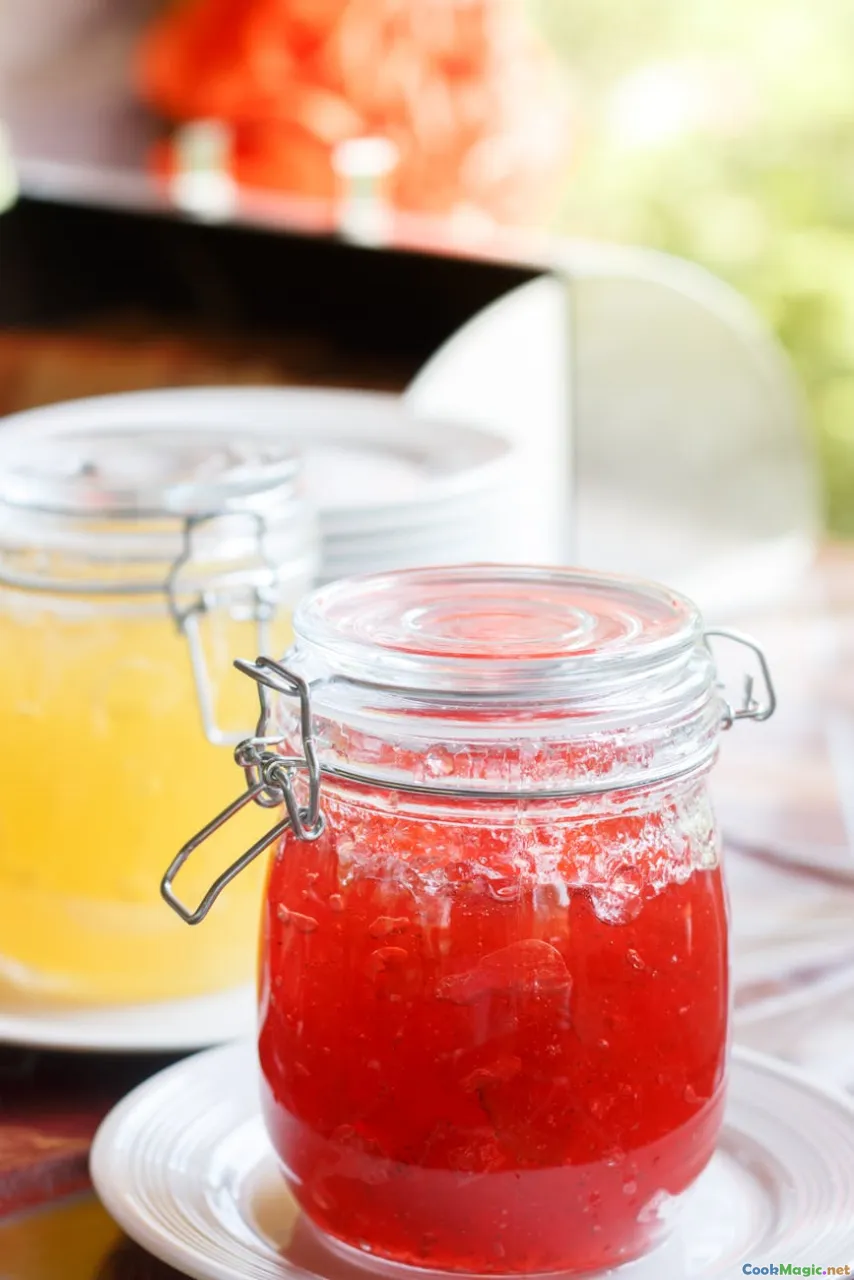
Home preservation is Bulgarian, Serbian, Macedonian grandmother science—and it’s also food safety. There’s an art to keeping flavor alive while making jars shelf-stable.
- Cleanliness: Start with immaculate jars and tools. A dishwasher sanitize cycle works; the oven-dry method is classic.
- Hot in, hot out: Fill jars with ajvar that’s at a low boil. Hot food, hot jars, hot lids.
- Headspace: Leave a centimeter at the top to allow for expansion during processing.
- Water bath: Processing at 90–95°C for 15 minutes helps guard against spoilage. Don’t overdo it; excessive heat dulls freshness.
- Oil cap: Traditional, but not a guarantee against microbes. Use in addition to, not instead of, proper processing.
- Storage: Dark, cool, steady. A cellar or a back pantry. If a lid bulges or hisses on opening, discard. If mold appears, don’t scrape and hope—say goodbye.
Variations Across Macedonia—and the Balkans

Within North Macedonia, you’ll meet infinite micro-variations:
- Pelagonija sweetness: Peppers grown around Bitola and Prilep often yield ajvar that tastes almost fruity, with low bitterness. Many cooks here skip eggplant altogether to let that sweetness star.
- Tikveš depth: The vineyards of the Tikveš region share soil with pepper farms. Ajvar here may go a shade darker, with a little more eggplant for a wine-like undertone.
- Skopje convenience: Apartment kitchens turn to oven-roasting and food processors. The flavor can be smoky if you char under a broiler and finish on a gas flame.
- Village belts: Hot ajvar—just a nudge—comes from slipping in two or three roasted hot peppers per five kilos of sweet ones.
Beyond borders:
- Serbia: Thicker, sometimes intensified with longer reduction. Brands calling themselves “Leskovački” are known, but home cooks still dominate the flavor spectrum.
- Croatia: Coastal cooks might use olive oil; inland, sunflower rules. Some recipes include a touch more vinegar.
- Bulgaria: The lines blur into lutenica, a separate but related relish that moves tomato forward and uses carrot for body.
- Albania and North Macedonia share affection for malidžano, with walnuts lending a gentle, buttery finish.
These differences are not divisions; they’re dialects. If you love language, you’ll love tasting through them.
Serving and Pairing: The Ajvar Table
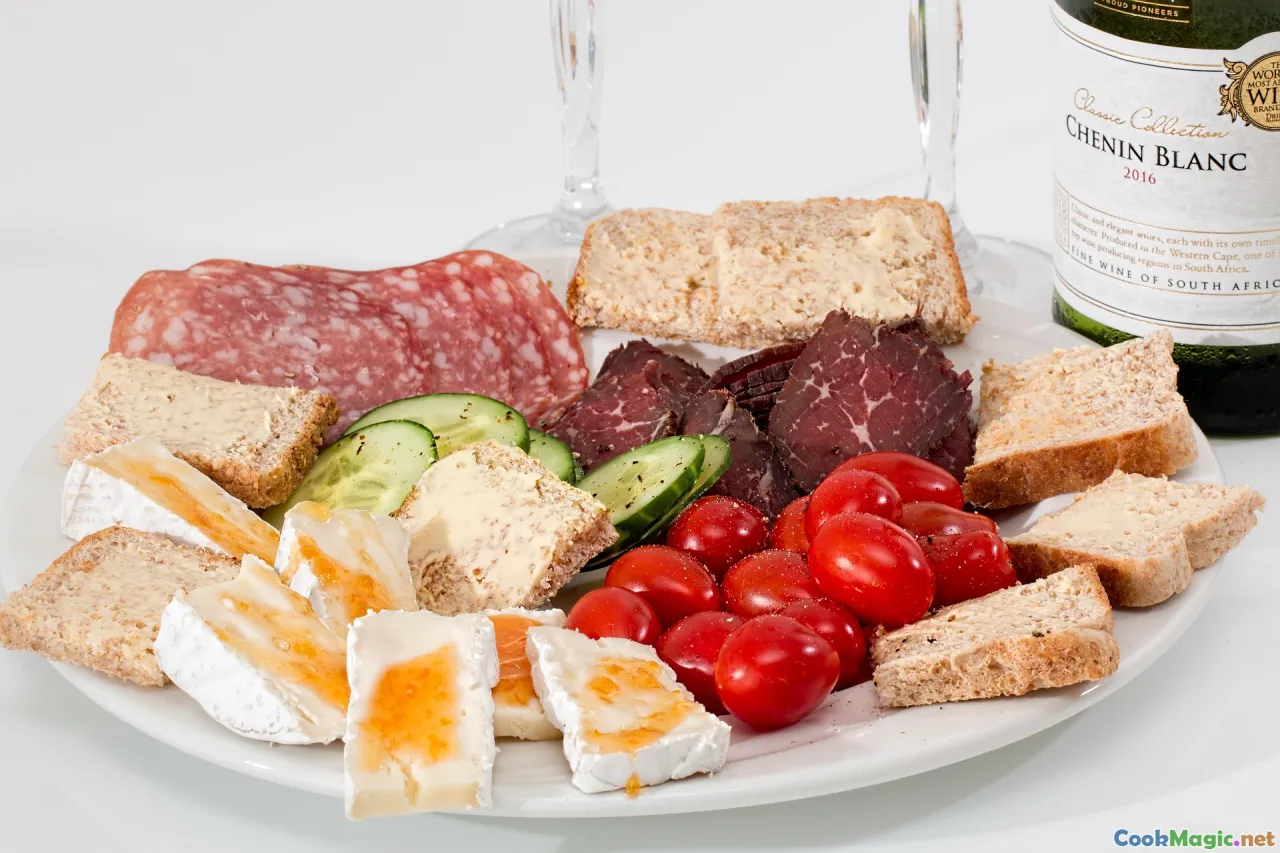
Ajvar goes everywhere on a Macedonian table, but some pairings feel inevitable.
Everyday joy:
- Fresh bread still steaming, split and smeared edge to edge with ajvar. Add thin slices of sirenje. Eat standing by the window.
- Tavče gravče (the national baked beans) spooned onto a plate, crowned with a dollop of ajvar and a few rings of raw onion.
- Pastrmajlija from Štip—a boat-shaped flatbread studded with seasoned pork—dabbed with ajvar for sweetness against the salty meat.
- Grilled Ohrid trout brushed with ajvar and lemon, the pepper’s warmth hugging the fish’s crisped skin.
Entertaining:
- Mezze board: Ajvar beside kajmak, olives, cured meats, pickled feferoni, and torn somun. Serve with rakija for heat and honey, or a crisp Tikveš white wine.
- Late-night sandwich: Leftover meatballs, thinly sliced onion, and ajvar on lepinja. The next morning is better because you made it.
Professional kitchen ideas:
- Ajvar vinaigrette: Whisk ajvar with sunflower oil, a touch of sherry vinegar, and a splash of pepper brine to dress roasted beets or grilled zucchini.
- Ajvar compound butter: Fold a spoonful into softened butter with lemon zest; melt over grilled lamb chops.
- Ajvar aioli: Blend with garlic mayonnaise and lemon for a burger spread.
Story from the Fire: A Day in Bit Pazar
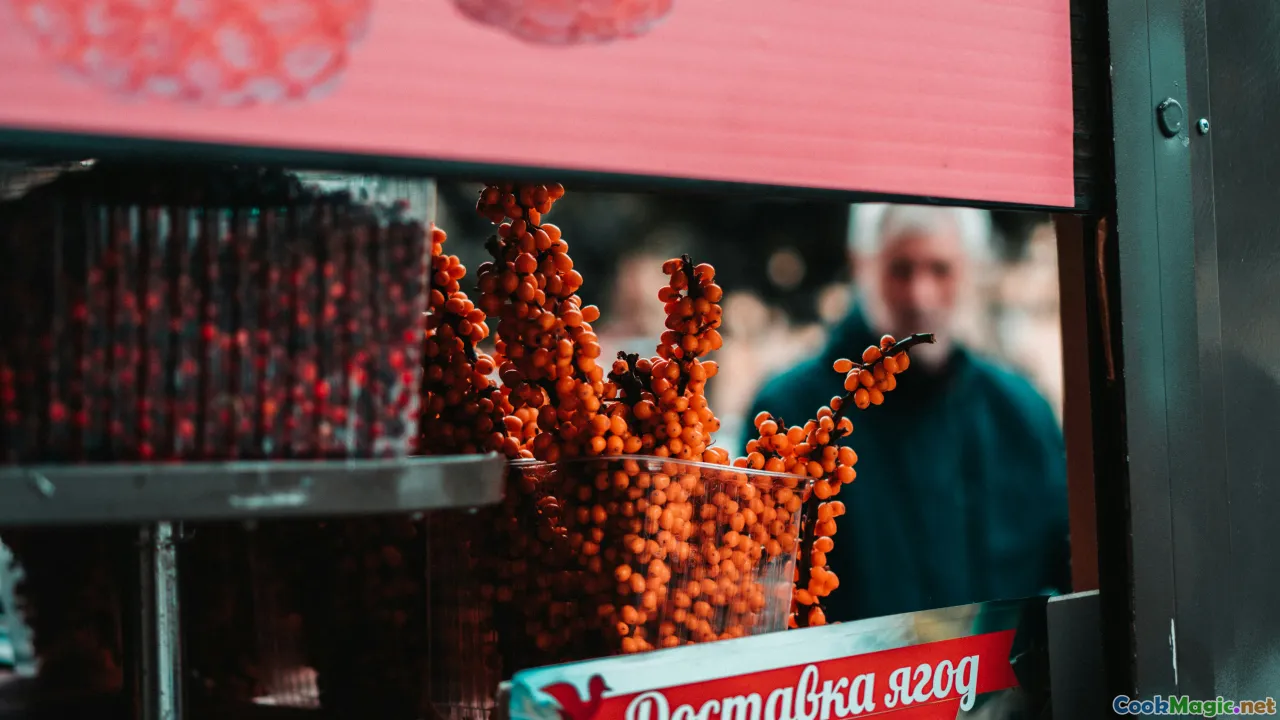
Bit Pazar, Skopje’s bustling market, is where I got religion. I arrived early on an October morning when the sky was the color of tin and the stalls were still yawning awake. A vendor with a cap pulled low offered me a wedge of sirenje and a pepper straight from a drum roaster, blistered and fragrant. He slit the pepper on a crate, sprinkled it with salt from a bowl on his scale, and folded it like a letter. I bit in, and my hands filled with sweet juice and smoke.
I asked him what made the best ajvar. He said: patience, good oil, and one honest pot. Then he shrugged as if to say, you use what you have and tell the truth with it.
We walked past sacks of paprika—brick-red, vermilion, maroon—each labeled with a farm and year. There were jars from last season stacked like a family: squat, tall, green lids, gold lids. A woman sold hand-carved wooden spoons smoothed to a satin finish from generations of stirring. I bought one. It has a notch that fits the curve of a pot as if made for it. Maybe it was.
I carried home peppers in a net bag, their weight bumping my leg like a toddler tugging a sleeve. By dusk, my apartment smelled like a backyard in Veles. Neighbors on the stairwell wished me “Sreќno!”—good luck—and I swear the air outside my door warmed by one degree.
Troubleshooting and Chef-Level Tweaks
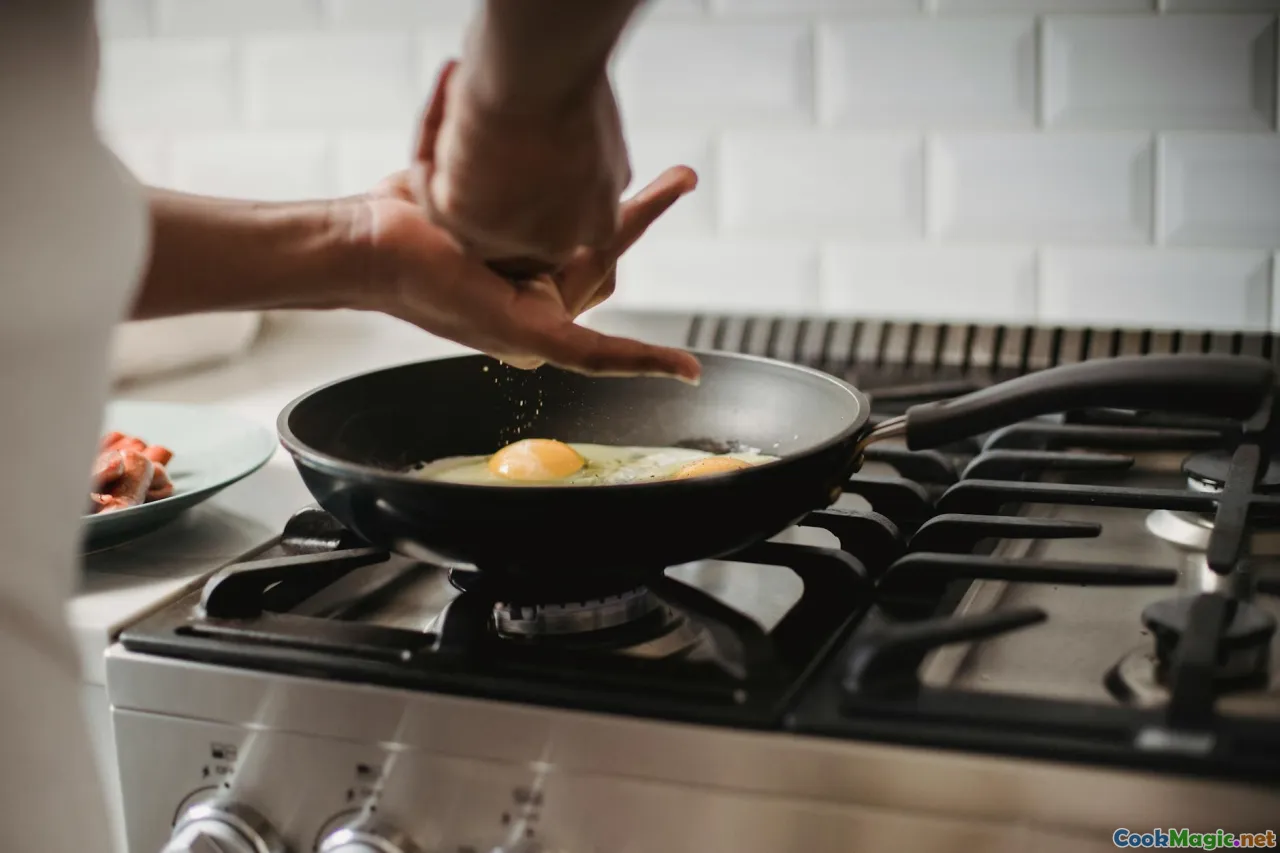
Even seasoned cooks hit snags. Here’s how to rescue and refine.
If ajvar tastes bitter:
- Cause: Burned skins left on, or cooked on too high heat.
- Fix: Stir in a pinch of sugar and a few tablespoons of fresh roasted pepper purée if you have it; cook another 10 minutes. Add a teaspoon of vinegar for lift.
If it’s watery after an hour:
- Cause: Peppers not drained; pot too narrow; heat too low.
- Fix: Increase surface area—split into two pots or switch to a wider pan. Keep at a steady simmer, not a boil. Stir more often.
If it’s greasy:
- Cause: Oil added too fast or too much.
- Fix: Simmer gently without adding oil, stirring to encourage emulsification. A spoonful of tomato paste is heresy in purist circles but can help bind; use sparingly.
If it’s bland:
- Cause: Under-seasoned or under-reduced.
- Fix: Salt in tiny increments; cook another 10–15 minutes to concentrate. A squeeze of lemon or a half-teaspoon of vinegar can awaken sweetness.
Chef tweaks:
- Smoked paprika reinforcement: A pinch can mimic driftwood smoke if you roasted indoors. Use with restraint.
- Pepper blending: Mix varieties—70% thick-fleshed sweet; 20% medium-walled; 10% hot. Complexity without heat overload.
- Garlic confit: If garlic feels harsh, stir in mashed garlic confit near the end for sweetness.
- Roast over grapevines: If you have them, vine prunings lend a distinctive aroma many Macedonian winemakers swear by.
A Cook’s Notes on Texture: Grinder vs. Processor
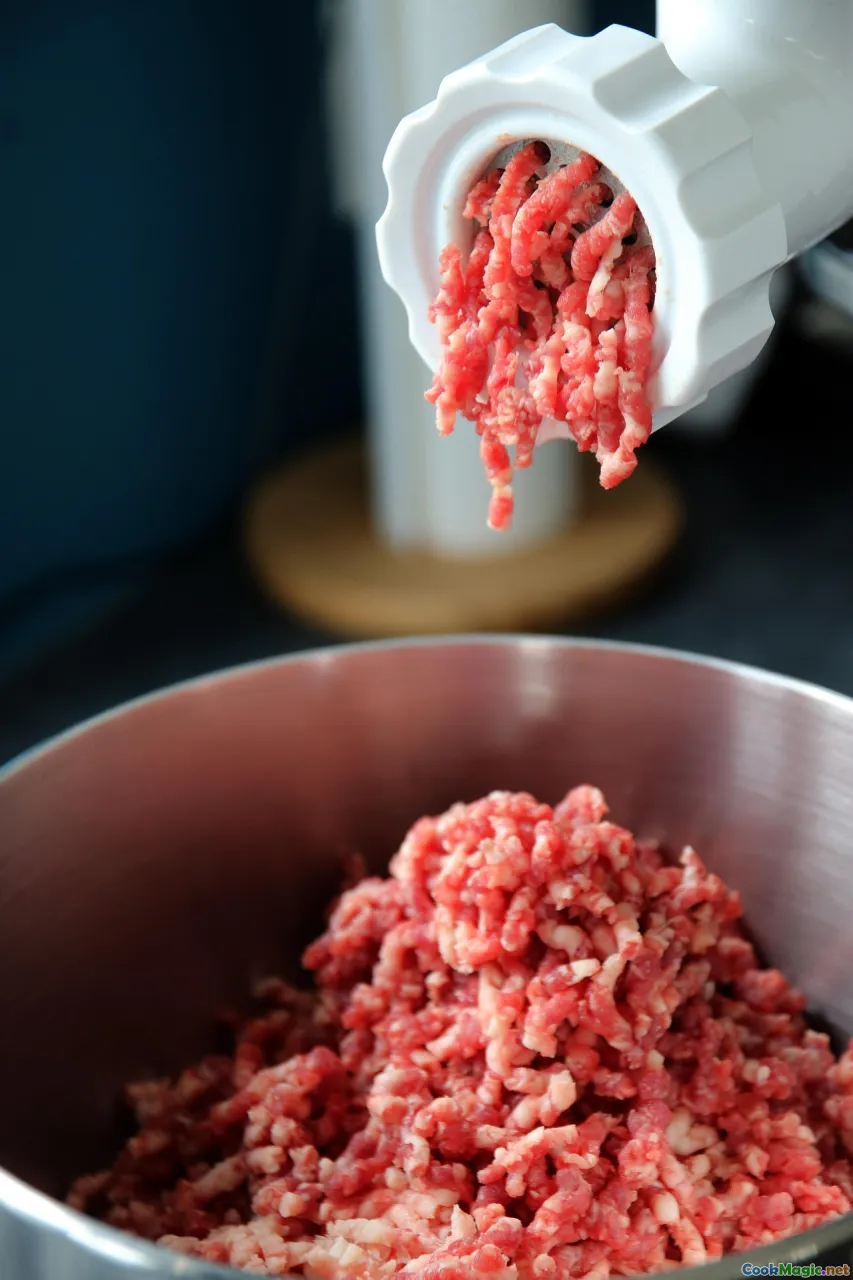
This choice steers the mouthfeel.
- Meat grinder: Produces a uniform, nubby consistency that catches oil beautifully. The spread feels plush but structured, with tiny, tender bits.
- Food processor: Can easily tilt to silky-purée and risk a baby-food smoothness. If you prefer a more refined texture, pulse carefully and stop early.
- Knife chop: Romantic but impractical for large batches. Still, in a pinch, a fine hand-chop yields a rustic, satisfying texture.
Texture is memory. When I taste a grinder-made ajvar, I’m back in a kitchen with a clamped metal grinder bolted to a table, the handle turning like a windmill in a childhood drawing.
Sustainability and Zero-Waste: The Ajvar Ethic
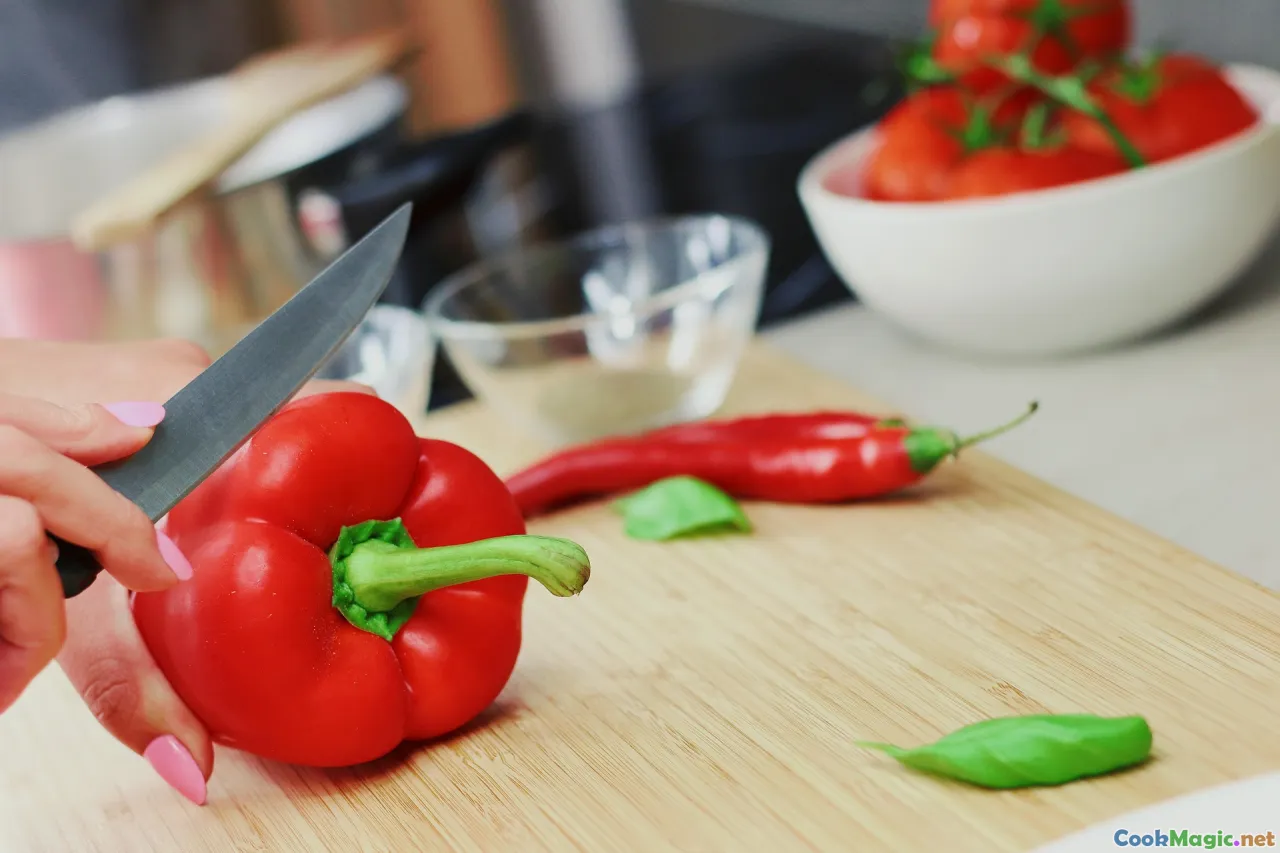
The ajvar ritual already skews sustainable: local produce, seasonal preservation, shared labor. A few more nudges make it greener.
- Char skins and stems: Compost the spent skins, stems, and seed clusters. They break down quickly.
- Jar reuse: Save jars and check seals carefully. Avoid chipped rims.
- Pepper water: The liquid drained from chopped peppers is a savory, sweet elixir. Reduce it by half and use as a base for soups or to cook grains.
- Fire efficiency: Roast in batches, filling the grate fully. Residual heat can soften eggplants as the fire fades.
Beyond the Classic: Menu Ideas That Respect the Roots

Think of ajvar not as an end but as a foundation.
- Ajvar and beans, leveled up: Mash ajvar into warm cannellini beans with lemon and mint; top with toasted bread crumbs.
- Roast chicken glaze: Loosen ajvar with a splash of chicken stock and honey; brush over chicken in the last 10 minutes of roasting.
- Ajvar shakshuka: Cook onions and cumin, then stir in ajvar and a can of tomatoes. Crack in eggs. Bake until set; finish with dill and sirenje.
- Grains and greens: Toss farro with ajvar, roasted broccoli, and tahini-lemon dressing. Crumble sirenje over the top.
- Fish and fire: Spread a thin coat on fillets of white fish; broil until the ajvar caramelizes at the edges.
Always ask: does this honor the pepper? The answer should be yes.
Cultural Threads: Why Ajvar Feels Like Home
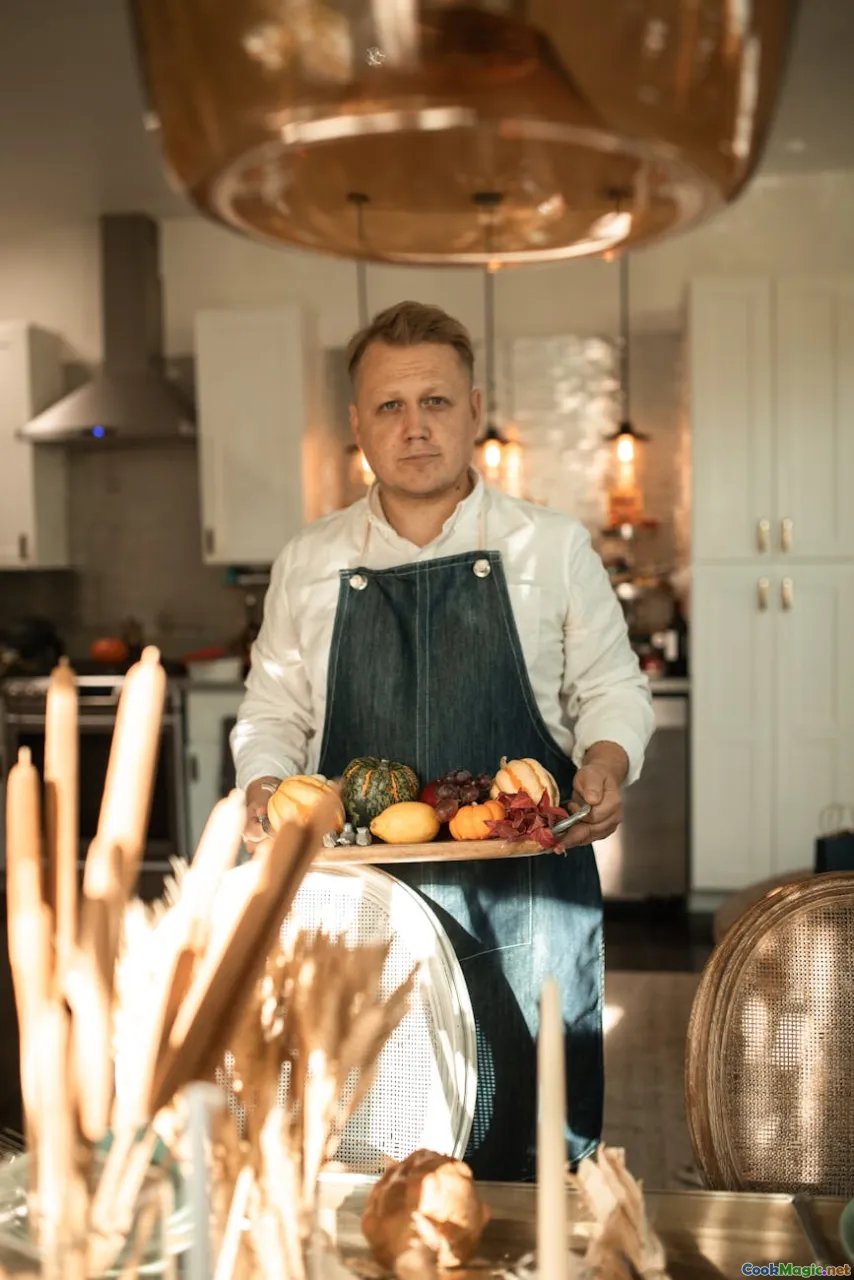
I’ve watched families set aside a whole weekend to make ajvar. There is coffee at dawn and beer at dusk, gossip threaded between tasks, and an unspoken consensus that when the last jar clicks shut, the household is ready for winter. Like pickling cabbage or simmering sheep’s milk into bijelo (white) cheese, it’s a rite of preparedness.
At a friend’s house in Prilep, the eldest aunt said something I’ll never forget: “We cook peppers so we can keep talking when the snow comes.” Ajvar is a storehouse of conversations—about who got married, how the vineyard fared, where the children might study. Each jar is an edible diary entry that outlasts the first frost.
Diaspora Macedonians carry that memory in checked luggage and in brands like Mama’s Ajvar on grocery shelves from Melbourne to Toronto. A spoonful on a plane-cooled baguette can transport them back to a yard where peppers blister and neighbors wander through unannounced, drawn by the smell.
Ingredient Sourcing: If You’re Far From Skopje

Not everyone has access to Macedonian markets. Here’s how to get close:
- Farmers’ markets: Seek out thick-walled, ripe red peppers—Carmen, Corno di Toro, and Sheepsnose Pimento are good substitutes.
- Eggplant: Choose Italian or Japanese varieties; they roast evenly and have fewer seeds.
- Oil: Neutral sunflower oil is widely available. If you can, look for cold-pressed sunflower oil from Eastern European producers; it tastes like home.
- Vinegar: White wine vinegar or gentle apple cider vinegar; avoid strong balsamics.
Seasonality matters. If you can’t make ajvar in autumn, roast and freeze peppers when they peak, then cook the spread later when your kitchen is ready for a slow afternoon.
Ajvar for Professionals: Scaling Up Without Selling Out

Restaurants love ajvar for its versatility and low food cost, but scaling requires finesse.
- Batch size: Keep to batches no larger than what fits in a 15–20 liter pot with at least a third of headroom. Overcrowding sacrifices evaporation and flavor.
- Heat source: Induction is efficient but can create hot spots. Use diffusers and stir in patterns—north-south, then east-west—to catch edges.
- Consistency: Standardize pepper varieties and roasting levels. Roast a few extra peppers to adjust color and sweetness at the end.
- Service: Treat ajvar like a sauce mother. Keep a master batch plain; season portions to order with citrus, herbs, or chili to suit dishes.
The Flavor Lexicon: Describing Ajvar Like a Pro

Culinary writing demands precision. Here’s language to move beyond “yummy” and into useful.
- Color: Brick red to garnet with a soft, matte sheen; flecks of darker skin can act as punctuation.
- Aroma: Warm pepper caramel, ember smoke, faint eggplant earth, a high note of vinegar if present.
- Texture: Plush and cohesive; spreads without breaking; holds a peak like soft frosting.
- Taste: Primary sweetness from roasted peppers, rounded by savory bitter edges from char; salt amplifying; a gentle acid lift.
- Finish: Clean and lingering; a memory of late-summer sun on the tongue.
Use these notes to guide adjustments. If the aroma skews grassy, you haven’t roasted or reduced enough. If the finish is flat, you may need a hint of acid or a pinch of salt.
A Final Pot, a Quiet Kitchen

The best ajvar I ever made happened by accident. I roasted at dusk and started cooking too late, the kind of late that makes neighbors tap their watches in the stairwell. The city hushed to a faint buzz, the pot barely murmuring, the spoon moving in unhurried figure-eights. I added oil a teaspoon at a time, then forgot time altogether. When I finally ladled the spread into jars, it glowed—deep, steady, the color of a hearth brick. I left the jars on a towel to cool and went to the window. The night had that crisp, apple-snap air Macedonians call a good omen for winter.
In the morning, I opened one jar, against my own advice to wait. I spread a thin layer on toast and let it sit for a few seconds, the warmth awakening the perfume. The first bite tasted like gathered hours—market chatter, charcoal smoke, the patient turn of a grinder, and the certainty that some foods carry seasons with them. That’s what you master when you master ajvar. Not just a recipe, but a way of holding on.
So go find peppers heavy as hearts and roast until the skins surrender. Drain, grind, and stir with attention. Salt with your head and finish with your nose. Put October in glass. Then, in January or June, when you need reminding, twist a lid and let the room fill with smoke and summer. That’s Macedonian ajvar: a spread, a story, a season you can eat.









